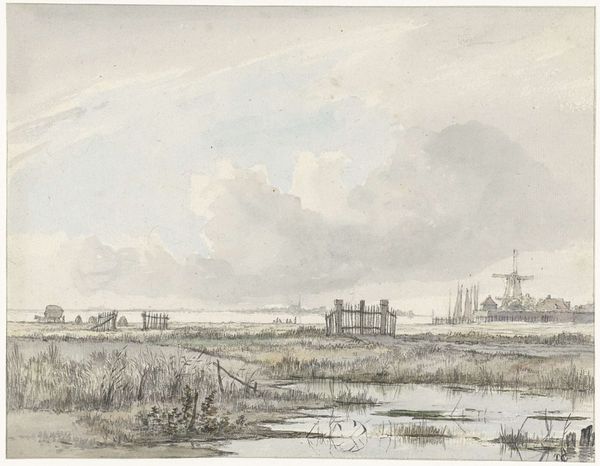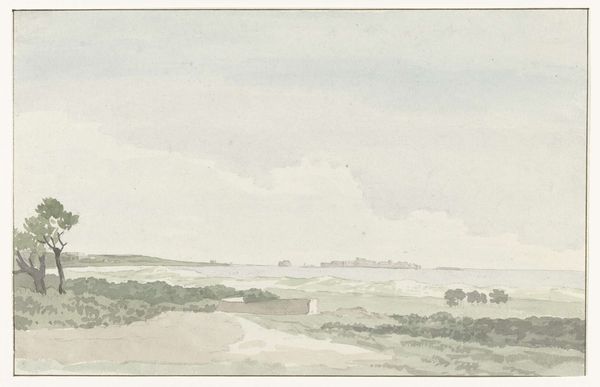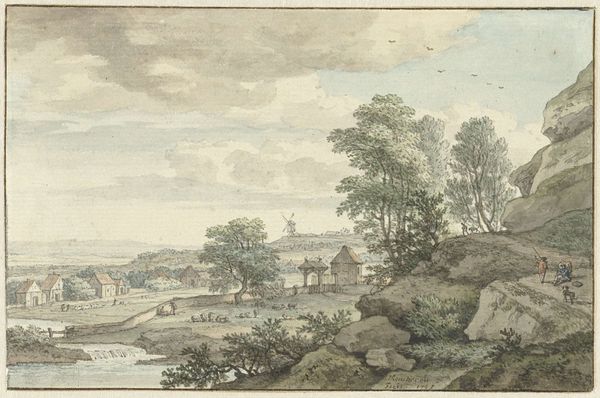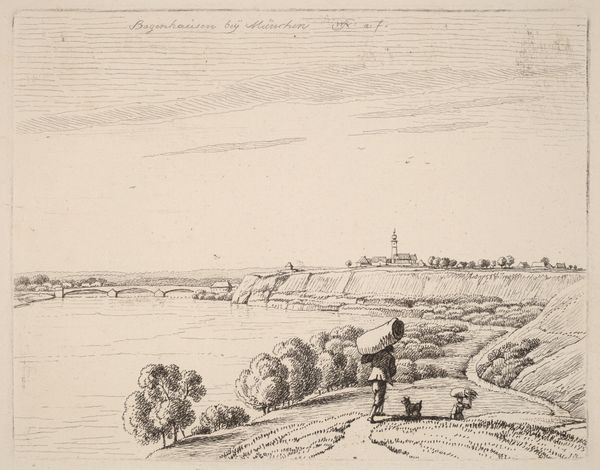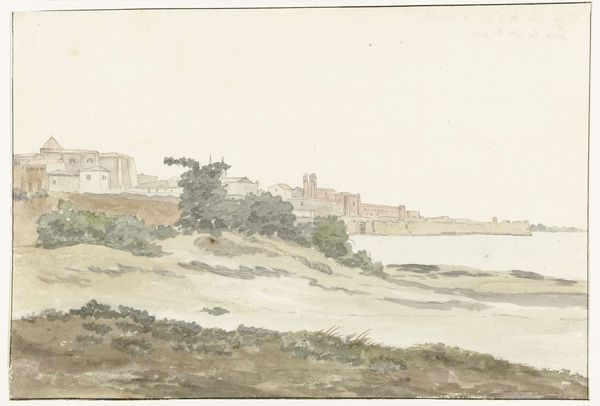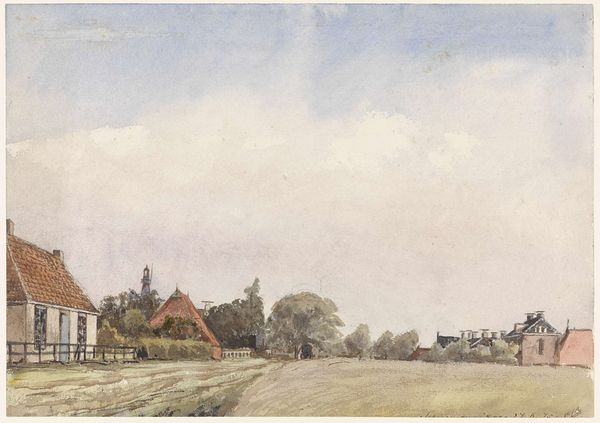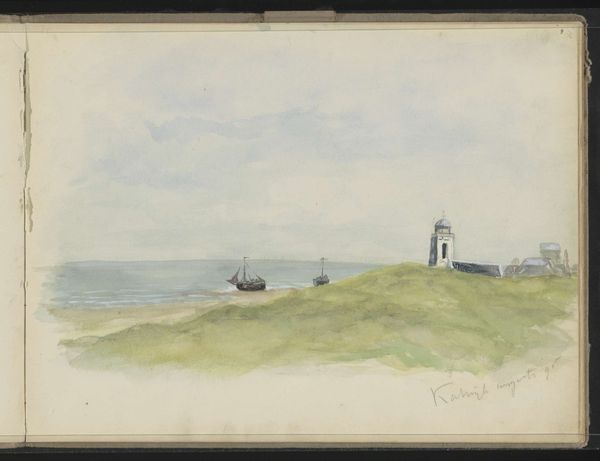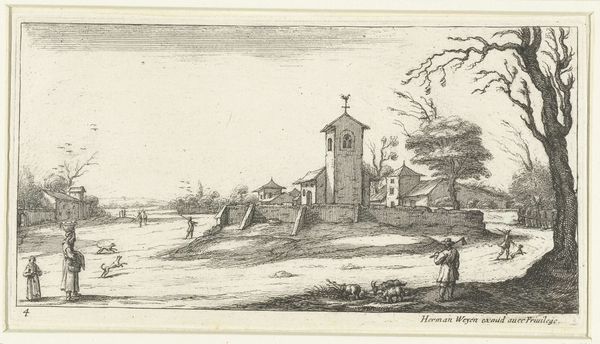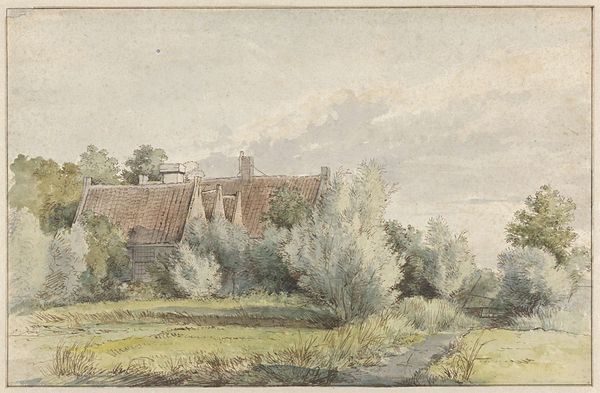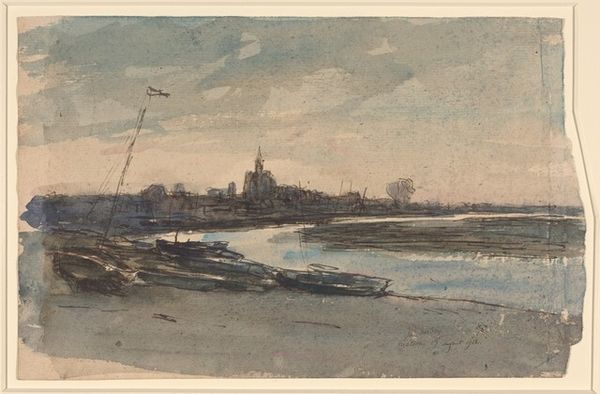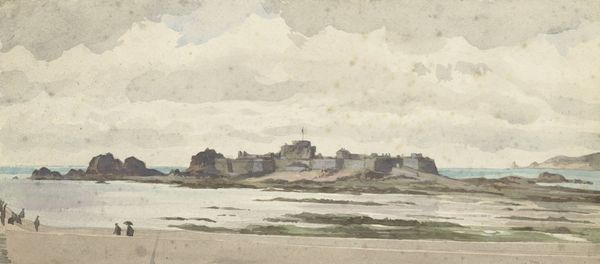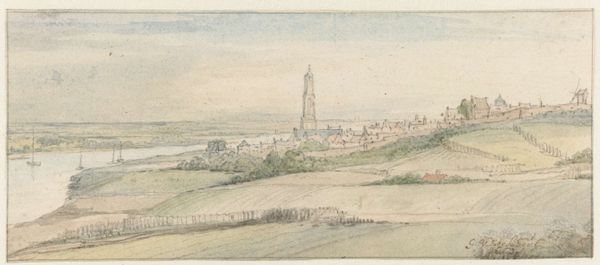
Udsigt mod et landskab. I forgrunden en markvej med en hestevogn; i baggrunden huse og en kirke 1830 - 1832
0:00
0:00
drawing, plein-air, watercolor
#
drawing
#
water colours
#
plein-air
#
landscape
#
watercolor
#
coloured pencil
#
romanticism
#
watercolor
Dimensions: 106 mm (height) x 173 mm (width) (bladmaal)
Editor: So, this is “View of a Landscape. In the foreground a country road with a horse-drawn carriage; in the background houses and a church” by Martinus Rørbye, from around 1830 to 1832. It’s a watercolor and pencil drawing. It feels…peaceful, maybe a little melancholic? What do you see in this piece? Curator: Beyond the surface of a tranquil landscape, I see a negotiation of power structures. This seemingly simple scene reflects the socio-economic realities of 19th-century Denmark. Who is being transported in the carriage? Consider their privilege compared to those working the land, walking on it or not visible at all in the rendering. How does Rørbye's perspective, as a member of the Danish Golden Age, influence his portrayal of this society? Are we invited to celebrate or question this social order? Editor: That's a completely different angle than what I was considering. I was just seeing a pretty landscape! Are you suggesting that Romantic landscapes like this always have that subtext? Curator: Not always overtly, but landscape painting during the Romantic period often served to idealize national identity and reinforce existing power dynamics. Think about land ownership, class divisions, the romanticizing – perhaps even erasure – of rural labor. This piece offers us the opportunity to critically examine these elements within the context of Danish history and artistic movements. What stories are left untold in this seemingly picturesque view? Editor: I guess I hadn’t thought about how the lives of everyday people would contrast with this idealized, serene landscape. I see what you mean about the subtext now. Curator: And how those absences speak volumes about who held the power to represent, and who was being represented. Editor: That's really made me rethink how I see landscapes now. Thanks!
Comments
No comments
Be the first to comment and join the conversation on the ultimate creative platform.
